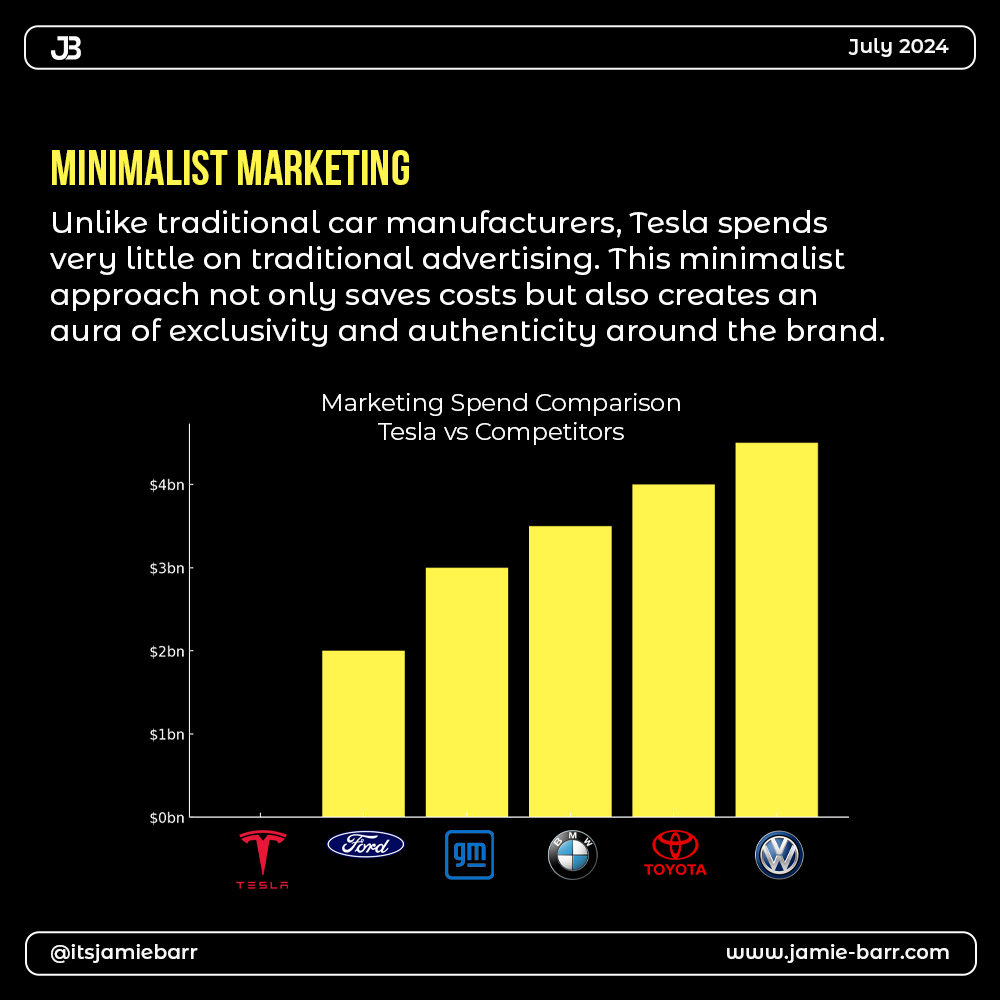In a world dominated by gasoline-powered vehicles, Tesla has not only introduced a revolutionary product but has also redefined how that product is marketed. Tesla’s journey from a niche brand to a mainstream automotive powerhouse is a testament to its innovative marketing strategies that have captivated audiences and transformed the industry. Here, we explore the key elements of Tesla’s marketing revolution that have propelled it to the forefront of the electric vehicle (EV) market.
1. Building a Brand on Vision
From the outset, Tesla’s marketing strategy has centered around a compelling vision: to accelerate the world’s transition to sustainable energy. This vision, championed by CEO Elon Musk, resonates with a growing audience concerned about environmental sustainability. Tesla’s marketing emphasizes not just the features of its cars but the broader mission of reducing carbon footprints and fostering a sustainable future. This mission-driven approach has created a strong emotional connection with consumers, turning them into brand advocates.

2. Leveraging the Power of Social Media
Elon Musk’s active presence on social media platforms, particularly Twitter, has played a crucial role in Tesla’s marketing success. Musk’s direct engagement with followers, announcements of new products, and responses to customer inquiries create a sense of transparency and accessibility. This strategy has helped build a loyal and engaged community around the Tesla brand. By bypassing traditional media channels and leveraging the power of social media, Tesla has been able to generate significant buzz and maintain a direct line of communication with its audience.

3. Creating a Cult-Like Following
Tesla has successfully cultivated a dedicated fan base that goes beyond traditional brand loyalty. Through events like Tesla’s annual shareholder meeting, also known as “Battery Day,” and product unveilings, the company creates excitement and anticipation akin to that of tech product launches. These events are not just about showcasing new vehicles but about sharing technological advancements and the company’s vision, further strengthening the emotional bond with its audience.
4. Innovative Product Launches
Tesla’s product launches are highly anticipated events that generate immense media coverage and public interest. The company’s approach to unveiling new models is akin to tech product launches, with live demonstrations and a focus on the innovative features of the vehicles. This approach not only highlights the cutting-edge technology behind Tesla’s cars but also positions the company as a leader in the automotive industry. The hype and excitement generated by these launches contribute to Tesla’s mainstream appeal.
5. Minimal Traditional Advertising
Unlike traditional automakers, Tesla spends minimal resources on conventional advertising. Instead, the company relies on word-of-mouth, social media buzz, and its strong brand presence. This strategy is cost-effective and leverages the enthusiasm of Tesla owners who become brand ambassadors, sharing their positive experiences with others. The organic growth resulting from satisfied customers and Tesla’s innovative approach to marketing has proven to be incredibly effective.

6. Creating an Experience
Tesla showrooms and service centers are designed to offer an experience rather than just a sales pitch. Potential buyers are encouraged to test drive the vehicles and explore their features in a hands-on environment. This experiential marketing approach allows customers to form a personal connection with the product, making the purchasing decision more impactful. Additionally, Tesla’s direct-to-consumer sales model ensures that the experience is consistent and controlled by the company, further enhancing customer satisfaction.
7. Focus on Continuous Innovation
Tesla’s commitment to continuous innovation is a core element of its marketing strategy. By regularly updating its vehicles with over-the-air software updates, Tesla ensures that its cars remain cutting-edge and relevant. This focus on innovation not only attracts tech-savvy consumers but also keeps the existing customer base excited about owning a Tesla. The promise of future advancements and improvements keeps customers engaged and invested in the brand.
Conclusion
Tesla’s marketing revolution is a masterclass in modern brand building and consumer engagement. By focusing on a compelling vision, leveraging social media, creating a dedicated fan base, and emphasizing innovation, Tesla has successfully transitioned from a niche player to a mainstream automotive giant. As the company continues to push the boundaries of technology and sustainability, its marketing strategies will undoubtedly continue to inspire and influence the industry.


